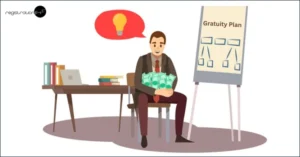System Analysis Program (SAP) : A Historical Overview

The SAP definition is System Analysis Program. It was first known as System Analysis Program Development. SAP is considered the most renowned and reliable ERP solution available in the market. This software program is developed by the firm SAP SE.
History Of SAP
In 1972, five former IBM workers started SAP in Mannheim, Germany. SAP was primarily designed to provide real-time customer engagement across a corporate database shared by multiple applications.
In 1973, SAP released R/1, a financial accounting system. R/1 was powered by IBM servers and disk operating systems (DOS) and had a single-tier architecture with display, programs, and data all on the same platform.
In 1979, SAP unveiled R/2, a mainframe system that enabled real-time data processing in the fields of accounting, manufacturing, supply chain, and human resources. R/2 employed a two-tier design, with data and applications on one platform and presentation on another. R/2 fuelled SAP’s expansion, enabling the vendor to add 200 or so new customers to its clientele.
With the advent of SAP R/3 in 1992, mainframe computing gave way to the client-server paradigm and two-tier architecture to three-tier architecture, where presentation, applications, and data were all housed independently. R/3 was a crucial product for SAP that helped the business become globally recognized.
The business introduced SAP NetWeaver in 2004, which attracted a lot of interest from the industry as the first completely interoperable web-based cross-application platform that could be used to create non-SAP apps as well. Additionally, SAP ECC, the replacement for R/3, was released in 2004.
SAP Business Suite 7 went live for global clients in 2009. A service-oriented architecture was employed in this version.
The company’s 2011 launch of SAP HANA, an in-memory database technology, is the centrepiece of its present business plan. For SAP, HANA was a significant development project. According to SAP, HANA will replace the conventional databases that SAP has been using for its business applications.
Additionally, the business has acquired over 60 companies since 1996. The corporation has made increasing mobility and developing its cloud computing capabilities a top priority in recent years. Among the more well-known purchases are the following:
- Qualtrics, 2018, experience management, later spun out by SAP;
- CallidusCloud, 2018, sales team performance management;
- Concur Technologies, 2014, online travel and expense management software as a service, the largest acquisition to date;
- Fieldglass, 2014, cloud-based contingent labour and services;
- Hybris, 2013, e-commerce;
- Ariba, 2012, cloud-based B2B marketplace;
- SuccessFactors, 2011, SaaS HCM; and
- BusinessObjects, 2007, business intelligence.
The Future of SAP
By 2022, SAP had made up its mind to keep pushing more clients into S/4HANA and the cloud while utilising both as platforms to offer cutting-edge technologies—AI, IoT, big data, and advanced analytics, in particular.
The overarching goal is to support clients in creating the “intelligent enterprise,” a novel form of business that leverages AI, ubiquitous networking, and more user-centred experiences to become more flexible, inventive, and eventually prosperous. SAP executives have stated that technology needs to be used to support a more ecologically sustainable future.
Categories: Finance
Tags:





